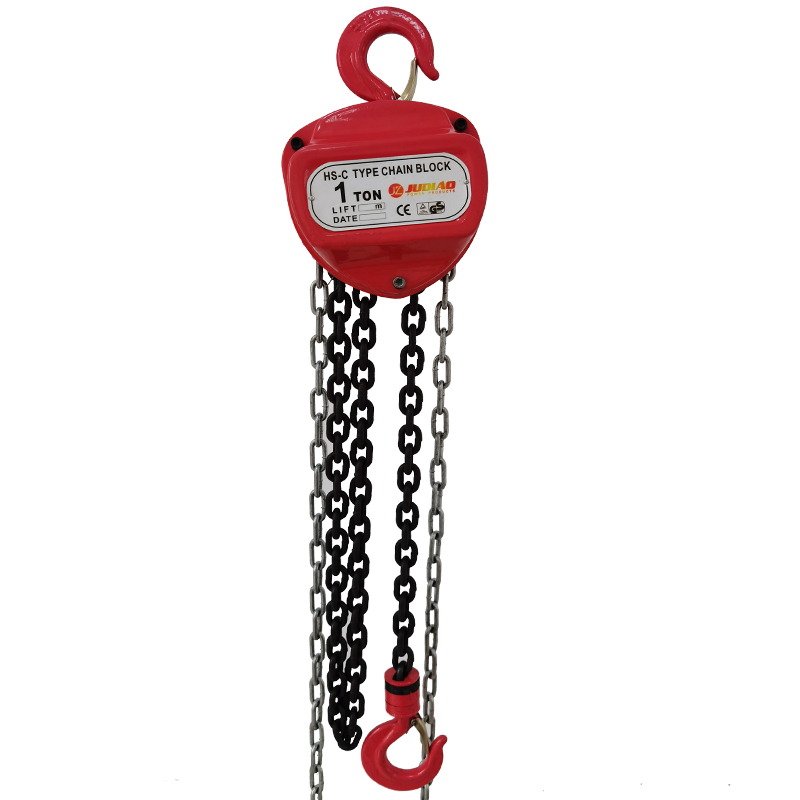


Understanding Manual Chain Block 1 Ton A Comprehensive Guide
In the construction and industrial sectors, efficient material handling is paramount. One of the essential tools for lifting heavy loads is the manual chain block, commonly referred to as a chain hoist. This article aims to provide an overview of the manual chain block with a lifting capacity of 1 ton, discussing its features, applications, and benefits.
What is a Manual Chain Block?
A manual chain block is a block and tackle device that employs a chain for lifting heavy items. It consists of a chain, a block (or pulley), a hook, and a lifting mechanism that is operated manually. The operation is simple; by pulling on the chain, the user can lift loads vertically. The manual chain block is particularly advantageous in situations where power sources are not available or when a more controlled lifting solution is needed.
Features of a 1-Ton Manual Chain Block
1. Capacity As indicated, a 1-ton manual chain block is designed to lift loads up to 1000 kilograms (2204.62 pounds). This makes it suitable for a range of applications, from lifting engines in automotive shops to hoisting equipment in warehouses.
2. Durable Construction These blocks are typically constructed from high-quality steel to withstand the stress of heavy lifting. The hooks are often designed with safety catches to prevent accidental disengagement of the load.
3. Low Maintenance Manual chain blocks require minimal maintenance compared to electric hoists. Regular lubrication and inspection can ensure longevity and reliable performance.
4. Compact and Portable With a small footprint and lightweight design, a 1-ton manual chain block can be easily transported and used in various locations. This feature makes it appealing for contractors and tradespeople who frequently move between job sites.
5. Versatile Applications These hoists can be employed in a variety of settings, including construction sites, warehouses, factories, and even for personal projects such as lifting items into attics or over fences.

Applications of a 1-Ton Manual Chain Block
Manual chain blocks are incredibly versatile and find applications in numerous industries
- Construction Used extensively to lift building materials, tools, and machinery. - Manufacturing Helpful in moving heavy components along assembly lines or lifting machinery for maintenance. - Warehousing Essential for loading and unloading goods from trucks or storing inventory on high shelves. - Automotive Frequently used for engine hoisting or when performing repairs involving heavy parts. - Theatre and Events Often utilized to lift lighting rigs and props above stages.
Benefits of Using a 1-Ton Manual Chain Block
1. Cost-Effective Manual chain blocks are generally less expensive than powered hoists. Their low operational costs contribute to significant savings, especially for businesses looking to manage an effective lifting solution without high investments.
2. Simplicity and Safety The simple mechanics of a chain block minimize the chances of malfunction. Moreover, the ability to control the lifting speed manually allows operators to perform lifts with greater precision, reducing the risk of accidents.
3. Reliability In situations where power failures might stop electric hoists, a manual chain block offers a reliable alternative, ensuring work can continue uninterrupted.
4. Ease of Use Operating a manual chain block requires no special training. Basic instructions are sufficient for most users to understand how to safely and effectively lift loads.
Conclusion
In conclusion, a manual chain block with a capacity of 1 ton is an invaluable tool in many industrial and construction scenarios. Its robust design, low maintenance requirements, and versatility make it an ideal choice for lifting heavy loads safely and efficiently. Whether for professional use in various industries or personal projects, understanding the features and applications of a 1-ton manual chain block can empower users to make informed decisions about their material handling needs. By investing in this essential lifting device, businesses and individuals alike can enhance productivity and ensure safety in their operations.



